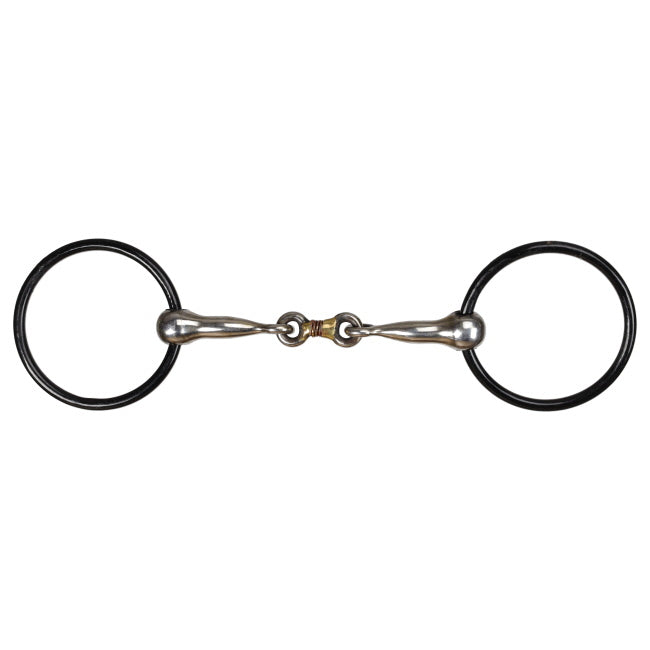What is a Snaffle Bit?
A snaffle bit is one of the most common simple bits you can find. This is for a good reason; a snaffle is very gentle on the horse's mouth. It sits comfortably in the horse's mouth in the rear opening between its top and bottom teeth. You can also use rubber lip guards to prevent pinching of the lips.
A snaffle bit can have a straight or jointed mouthpiece with rings on each end of the mouthpiece. This allows straightforward communication between the horse and rider. Snaffle bits are often seen with young horses and beginner riders.
How a Snaffle Bit Works
A simple snaffle bit applies pressure to the bars of the horse's mouth to communicate; there is no pressure anywhere else on the horse's head. Another factor that sets the snaffle apart is that no leverage is used, as is with curb bits.
When you pull straight back on a snaffle bit, the horse will feel equal pressure on both sides of its mouth, and it’s a clear communication that means slowing down. Pulling to the right applies pressure on the right bar, which means turning right. And likewise, a pull to the left means turning left.
Types of Snaffle Bits
D-ring Snaffle
A D-ring snaffle bit, also called a “dee ring,” gets its name from the D-shaped bit rings. This snaffle bit is similar to the eggbutt snaffle because the ends of the mouthpiece come together into a hinge where the bit-ring attaches. The snaffle's shape prevents the mouth's corner from being pinched.
Eggbutt Snaffle
The eggbutt snaffle is the gentlest bit that you can find., It’s called an eggbutt because the connection between the mouthpiece and the bit-ring resembles an egg. This type of snaffle doesn't pinch the corners of the horse's mouth. Sometimes, you’ll see this bit as a barrel head snaffle bit.
Loose Ring Snaffle
 On a loose ring snaffle bit, the mouthpiece attaches to sliding rings. The sliding rings will rotate the bit when a horse tries to grab hold of it. This feature makes it difficult for the horse to gran the bit and gain control. One downside is the loose ring can get caught and pinch the horse’s lips.
On a loose ring snaffle bit, the mouthpiece attaches to sliding rings. The sliding rings will rotate the bit when a horse tries to grab hold of it. This feature makes it difficult for the horse to gran the bit and gain control. One downside is the loose ring can get caught and pinch the horse’s lips.
Full Cheek Snaffle
The full-cheek snaffle bit has cheekpieces that stop the bit from sliding through the mouth. This keeps the bit in the proper position and prevents it from getting caught on the lips or another part of the mouth.
Half-Cheek Snaffle
There are a few variations of the half-cheek snaffle; the Baucher bit and hanging cheek snaffles. The first has just an upper or a lower cheek, which keeps the cheeks caught on the starting gate in racing. The hanging cheek snaffle is fixed in the mouth and features a ring on the side of the mouthpiece with a smaller ring attached to the cheekpiece.
When it comes down to it, the key to finding the right bit for your horse is trying them out. After all, there are many types of snaffle bits to choose from. It will be clear when you’ve found the right bit for you and your horse. Your horse will be comfortable and relaxed, and you will be too!







